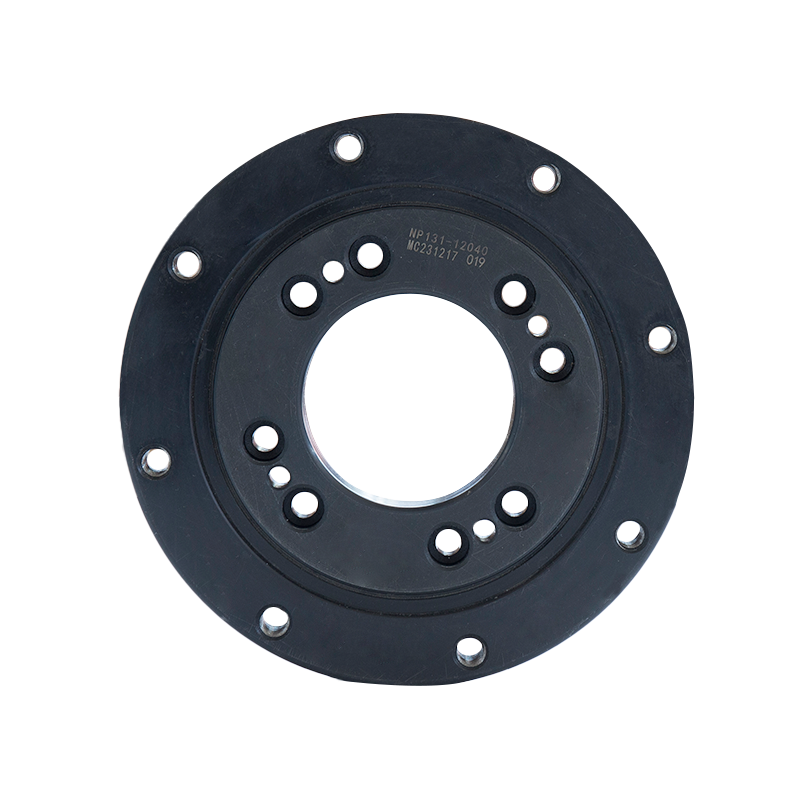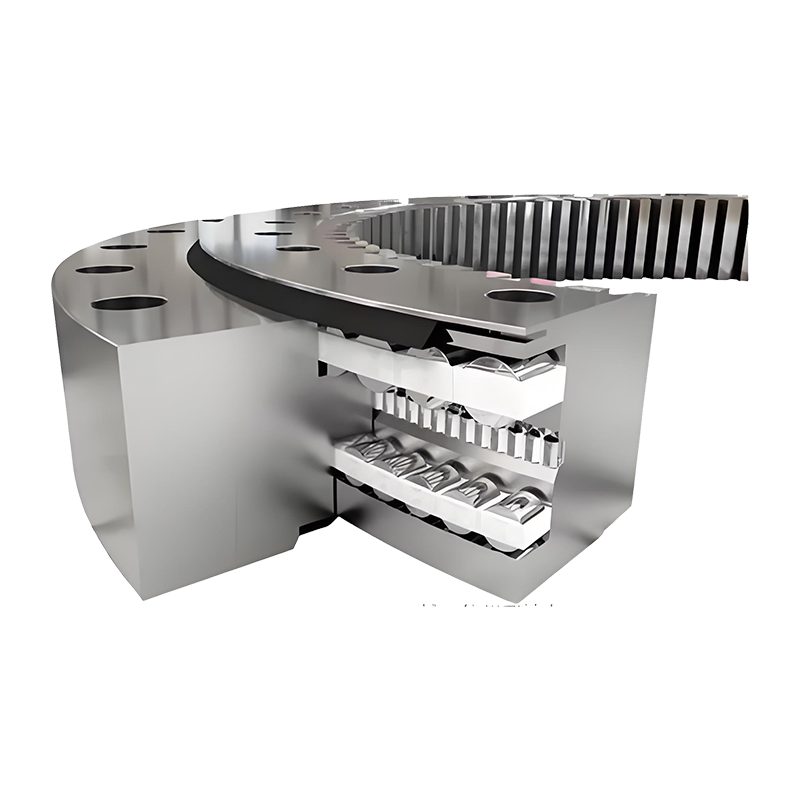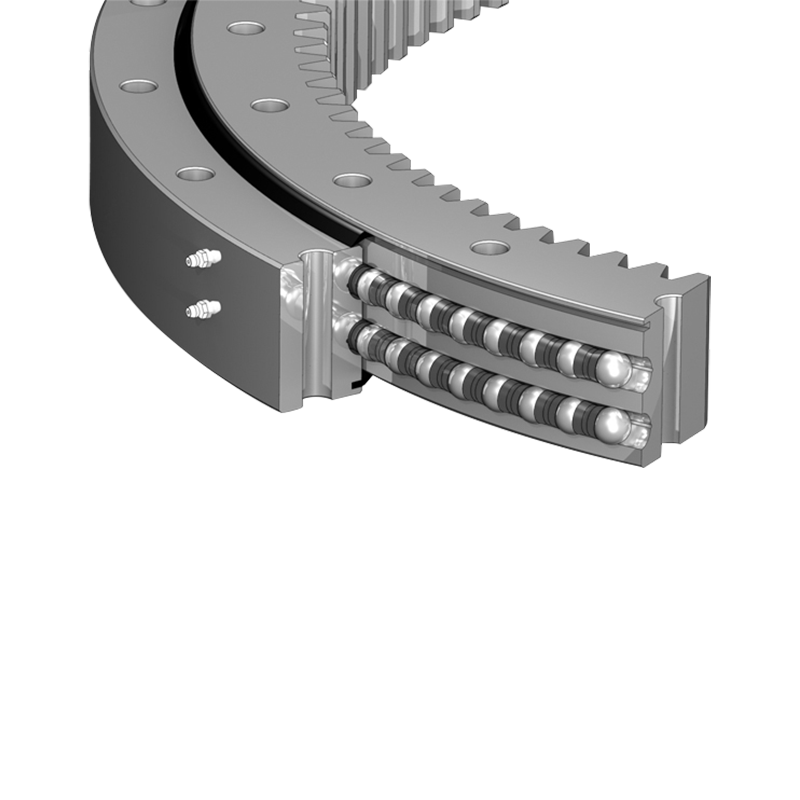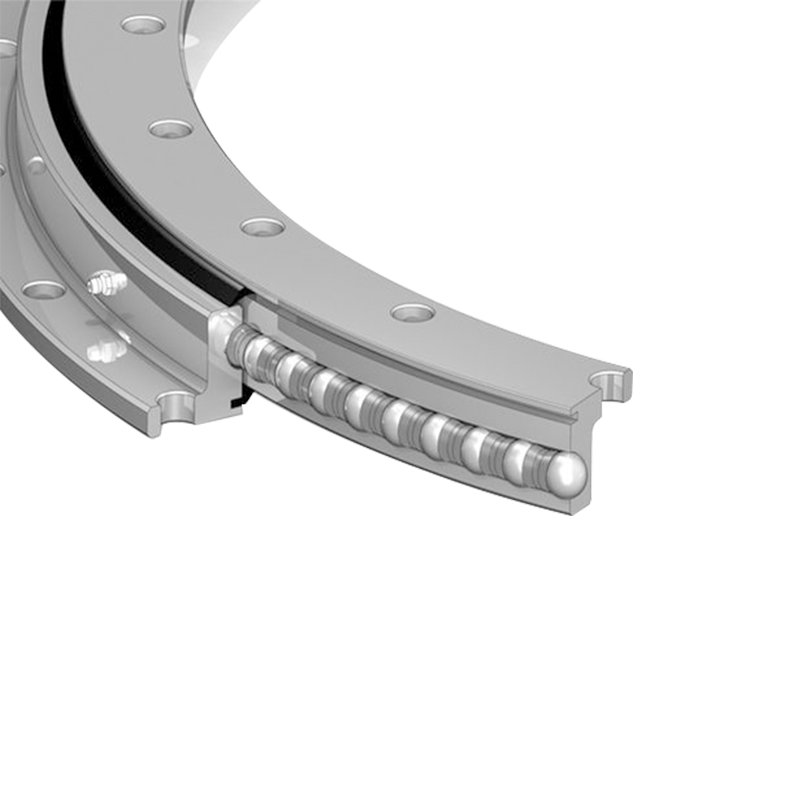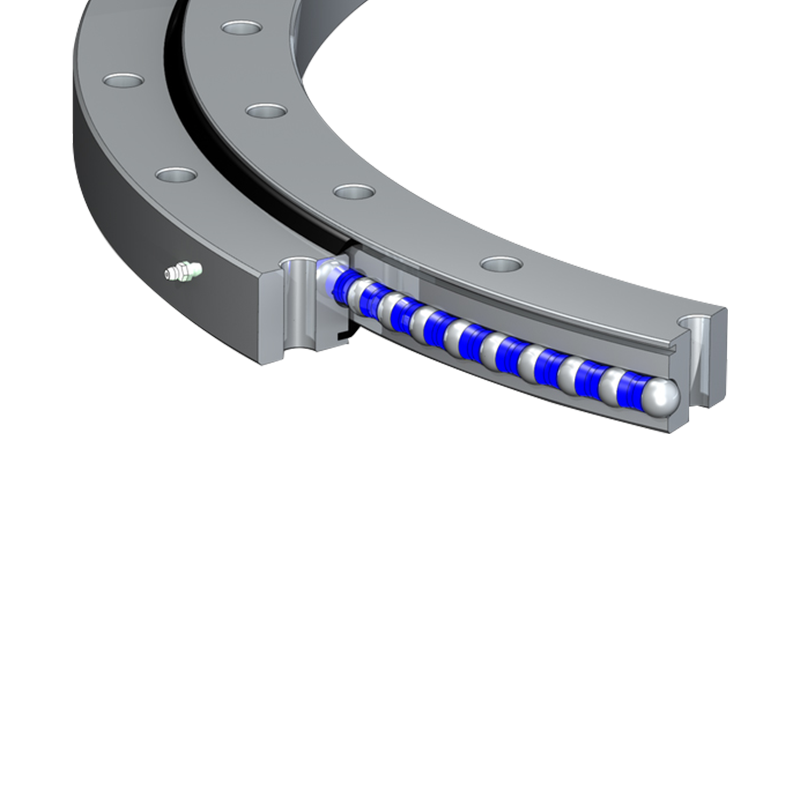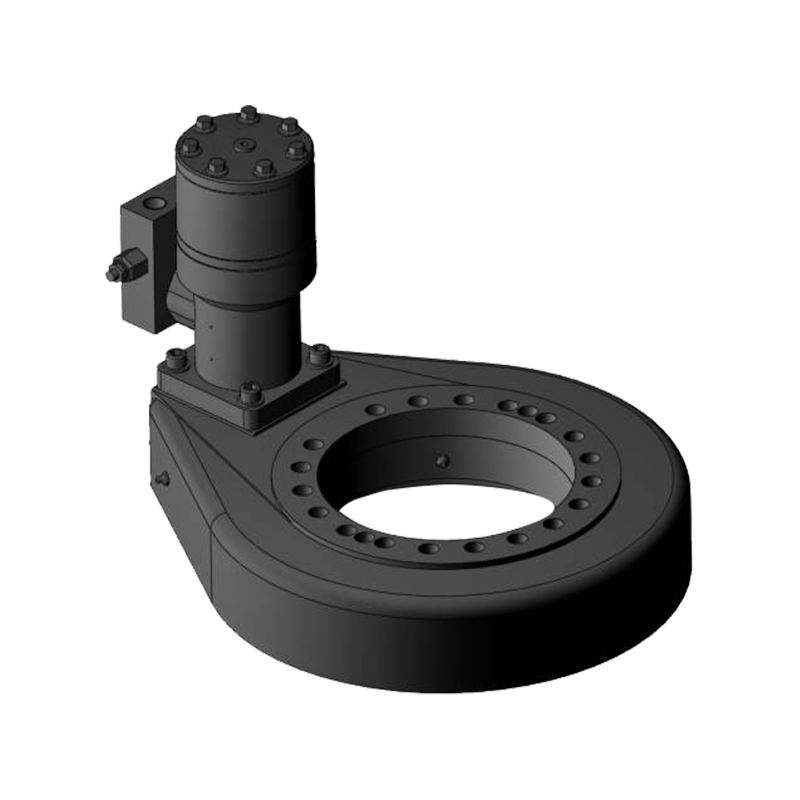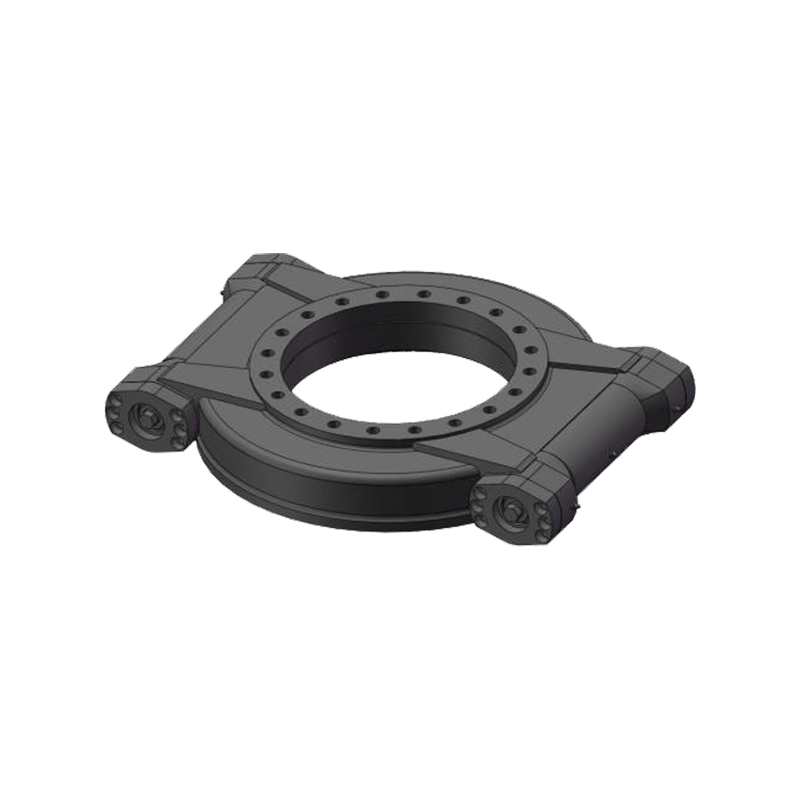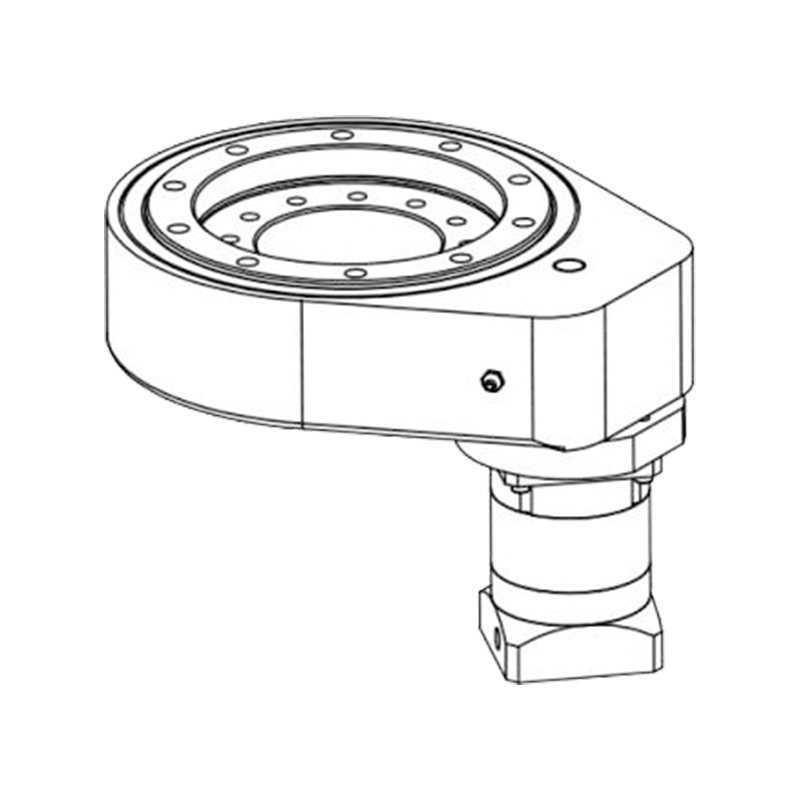Industrial Slewing Rings: The Unsung Heroes of Heavy Rotation
 2025.08.15
2025.08.15
 Industry news
Industry news
In the world of industrial machinery, where massive loads meet precise movement, one component stands as the critical enabler: the Industrial Slewing Ring Bearing. Far more than just a simple bearing, it's the robust, rotational backbone that allows cranes to swing, excavators to dig, wind turbines to track the wind, and radar arrays to scan the horizon. These highly engineered rings are the silent workhorses facilitating smooth, controlled rotation under extreme loads and harsh conditions.
Beyond Basic Bearings: Defining the Slewing Ring
An industrial slewing ring (also known as a slewing bearing, turntable bearing, or rotary bearing) is a large-diameter rolling-element bearing designed to handle simultaneously:
-
Axial Loads: Forces acting parallel to the axis of rotation (like the weight of a crane boom).
-
Radial Loads: Forces acting perpendicular to the axis (like wind pushing sideways on a turbine nacelle).
-
Overturning Moments: Forces that tend to tip or tilt the structure (a major challenge in applications like excavators or heavy lifters).
Unlike smaller bearings, slewing rings are typically custom-engineered or selected from extensive catalogs to match the specific load, size, environmental, and mounting requirements of the application. They integrate directly into the machine's structure, often serving as a primary structural element themselves.
Core Anatomy and Function
While designs vary, key elements define industrial slewing rings:
-
Rings: Two concentric rings (inner and outer), usually made from high-strength, forged alloy steel. One ring typically has gear teeth (internal or external) integrated for drive mechanisms.
-
Rolling Elements: Balls or rollers (cylindrical or tapered) that transmit loads between the rings. The arrangement determines the bearing type and its load-handling capabilities.
-
Raceways: Precision-machined grooves on the rings where the rolling elements run. Heat treatment (induction hardening) ensures durability.
-
Seals: Critical for excluding contaminants (dust, water, grit) and retaining lubrication. Multiple sealing options exist for different environments.
-
Lubrication System: Grease fittings and channels ensure rolling elements and raceways are properly lubricated for long life and smooth operation. Centralized auto-lubrication systems are common.
-
Mounting Holes: A pattern of threaded or plain holes on both rings for secure bolting to the machine's supporting and rotating structures.
Dominant Types: Matching Design to Load
The two most prevalent configurations are:
-
Single-Row Four-Point Contact Ball Bearing:
-
Structure: Single row of balls running in a gothic-arch raceway.
-
Capability: Excellent at handling combined axial, radial, and moment loads simultaneously. Highly compact design.
-
Ideal For: Moderate loads, applications requiring compactness (cranes, light excavators, material handling turntables, medical scanners).
-
-
Crossed Roller Bearing:
-
Structure: Two sets of cylindrical rollers arranged perpendicularly (crossed) between the rings. Rollers alternate direction.
-
Capability: Superior rigidity and very high moment load capacity due to the line contact of rollers. Handles high axial and moment loads efficiently.
-
Ideal For: High-precision applications, very high moment loads, situations demanding maximum rigidity (heavy excavators, robotic arms, precision turntables, tunnel boring machines, large radar pedestals).
-
Other variants include Double-Row Ball, Three-Row Roller (for extremely high loads), and specialized designs.

Where They Turn: Critical Industrial Applications
Slewing rings are indispensable across heavy industries:
-
Construction & Mining:
-
Excavators (boom swing, house rotation)
-
Mobile Cranes (boom swing, upper structure rotation)
-
Tower Cranes (slewing of jib and counter-jib)
-
Concrete Pumps (boom articulation)
-
Mining Shovels & Draglines
-
-
Wind Energy:
-
Yaw Systems: Rotating the entire nacelle to face the wind.
-
Pitch Systems: Adjusting the angle of individual blades (smaller rings).
-
-
Material Handling:
-
Port Cranes (Ship-to-Shore, RTGs)
-
Stacker/Reclaimers
-
Rotating Forklifts & Order Pickers
-
Automated Warehousing Turntables
-
-
Defense & Aerospace:
-
Radar & Satellite Dish Pedestals
-
Missile Launcher Turrets
-
Gun Turrets
-
Aircraft Cargo Loaders
-
-
Industrial Machinery:
-
Welding Positioners & Manipulators
-
Indexing Tables (CNC, assembly)
-
Robotic Arms (heavy-duty joints)
-
Medical Imaging Equipment (CT, PET scanners)
-
Packaging & Processing Equipment
-
Key Specifications & Selection Factors
Choosing the right slewing ring is paramount for safety, performance, and longevity. Critical factors include:
-
Load Ratings: Dynamic & Static Axial, Radial, and Moment capacities (usually defined per ISO 281 or similar).
-
Stiffness: Resistance to deformation under load (crucial for precision).
-
Gear Specifications: Module, number of teeth, accuracy grade (if driven).
-
Size & Dimensions: Bore diameter, overall height, bolt circle.
-
Material & Hardening: Steel grade, raceway hardness (e.g., HRC 58-62).
-
Sealing: IP rating (Ingress Protection), seal material compatibility.
-
Lubrication: Type, intervals, method (manual, auto-lube).
-
Environmental Conditions: Temperature range, exposure to dust, water, chemicals, salt spray.
-
Mounting: Interface design, bolt requirements, preload considerations.
-
Certifications: Industry-specific standards (e.g., DNV-GL for offshore, AGMA for gears).
The Future of Rotation: Trends in Slewing Ring Technology
Innovation continues to push the boundaries:
-
Advanced Materials & Coatings: Improved wear resistance, corrosion protection, and fatigue life.
-
Integrated Sensing (IoT): Bearings equipped with sensors for vibration, temperature, load, and lubrication monitoring, enabling predictive maintenance.
-
Improved Sealing Solutions: Enhanced materials and designs for longer life in extreme environments (deep mining, offshore).
-
Lightweighting: Optimized designs using finite element analysis (FEA) and advanced materials to reduce weight without sacrificing strength.
-
Increased Precision: For demanding applications like robotics and high-precision manufacturing.
-
Sustainability Focus: Longer service life, remanufacturing programs, and environmentally friendly lubricants.
Conclusion: The Pivotal Point
Industrial Slewing Rings are more than just components; they are the fundamental pivot points upon which immense forces and critical motions rely. Their robust design, precision engineering, and sheer load-bearing capacity make them irreplaceable in enabling the heavy machinery that builds our world, generates clean energy, and performs demanding industrial tasks. Understanding their types, capabilities, and selection criteria is essential for engineers and operators alike. As machinery grows larger, smarter, and operates in harsher environments, the continuous evolution of slewing ring technology ensures they remain the dependable, rotating foundation of modern industry. When specifying for heavy rotation, choosing the right slewing ring isn't just an engineering decision – it's a commitment to safety, reliability, and operational success.



